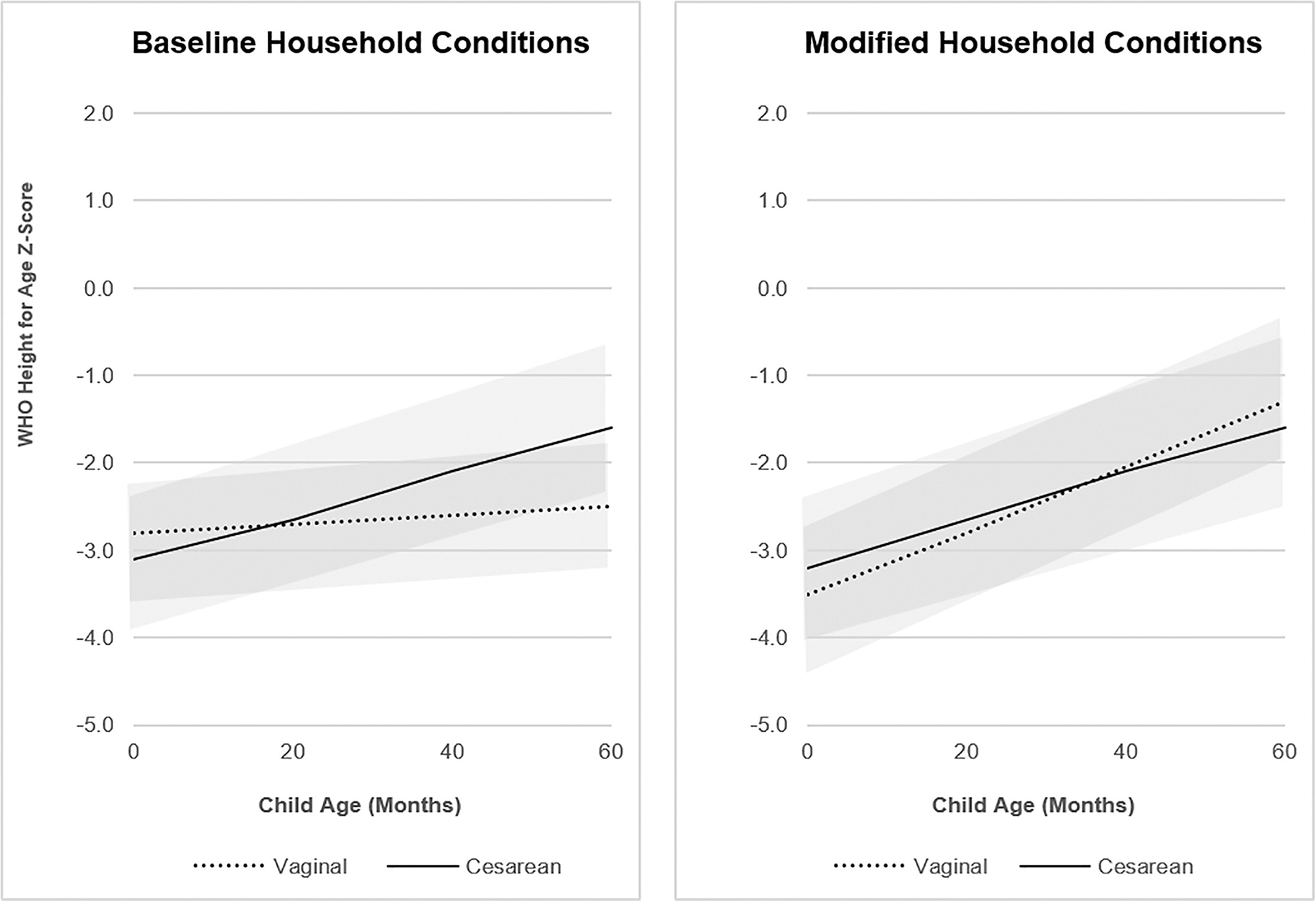
Introduction
Cesarean delivery is associated with childhood obesity in urbanized and sanitized environments, but this is not well-studied across broader epidemiologic settings. We examine birth mode, household conditions, and child growth in a Yucatec Maya farming community with limited sanitary infrastructure. We test the hypotheses that household infrastructure and epidemiologic conditions: (1) modulate associations between cesarean delivery and growth, and (2) are more strongly associated with growth compared to birth mode.
Methods
Birth mode, household characteristics (construction materials/waste disposal/water variables) and growth were examined in 106 children (0–5 years, 3554 longitudinal observations). A household modification index (HMI) was created to indicate “baseline” (more traditional) versus “modified” (more modernized) houses. Weight/height/BMI Z-scores (WHO-standards) were modeled with respect to HMI and birth mode using nested generalized linear mixed-effects models. A series of interaction models were then compared.
Results
Four household modification variables (concrete roof and floor, latrine/septic tank, burning trash) were associated with greater growth gains and used to compose the HMI. Cesarean delivery was associated with slightly higher Z-scores for most anthropometric outcomes. HMI modulated the association between birth mode and children’s weight and height, but not BMI, trajectories. Weight and BMI Z-scores, but not height Z-scores, were higher at all ages under high HMI (“modified”) versus low HMI (“baseline”) conditions regardless of birth mode.
Conclusions
Understudied household conditions can modulate the association between cesarean delivery and childhood growth. These findings contribute to a large body of literature linking cesarean delivery to a variety of child health outcomes including obesity.






